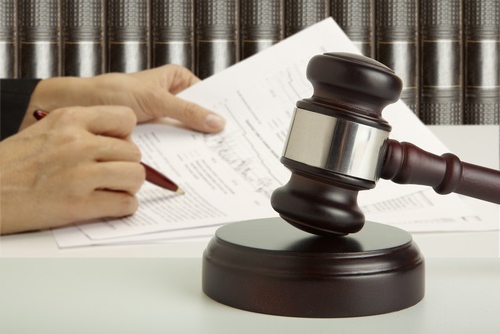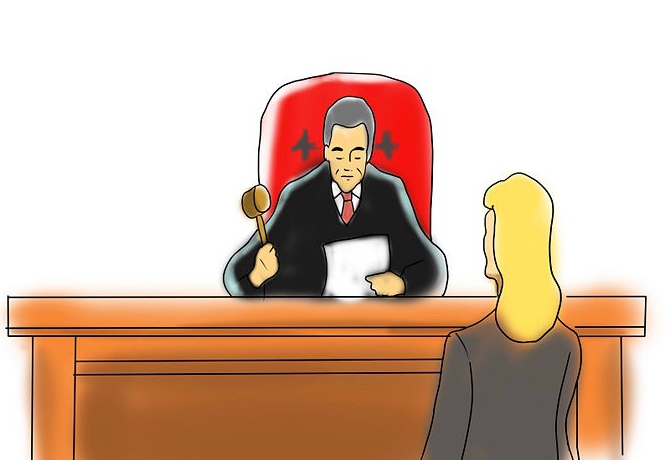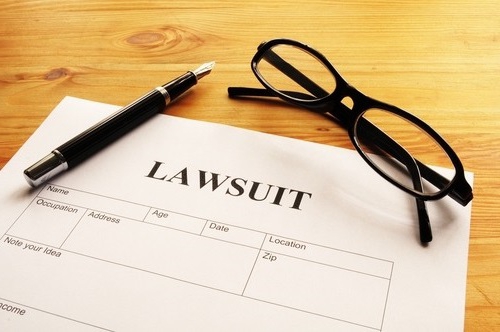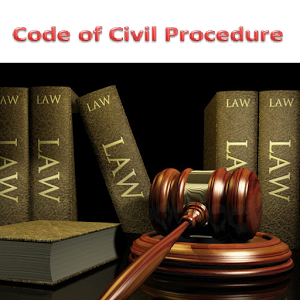Ground of action it is permissible to interpret both from the substantive position and from the procedural legal one. According to the interpretation of I.E. Engelman, from the first point of view this is a legal relationship that acts as the basis of the claim, and from the second - a set of circumstances that justify the claim under the law and must be indicated in full in the filed claim.
If you adhere to the opinion of D. A. Fursov, the procedural nature of the grounds for the claim contains 2 elements: legal grounds and factual circumstanceswhich point to specific legal norms and reflect the relationship of legal consequences with actual circumstances.
Arbitration lawsuit: determination
He occupies a dominant position among the remaining institutions of the arbitration procedural law in question. Both in the framework of a court of general jurisdiction and within the walls of an arbitration court, a lawsuit is an important procedural remedy for the defense of a disputed (violated) right.
The law gives each interested person the right to apply to the court (in this case, the arbitration court) with the requirement to protect his disputed (violated) right, interest protected by law, for which it is necessary to file a claim (statement of claim) in writing. In it, the person concerned (holder of the right) sets forth his immediate claim in relation to another person (violator of the rights of the plaintiff) - the defendant.
So, we can say that a lawsuit is a means of initiating an appropriate arbitration process regarding a specific case. Its legal aspect as a procedural protective remedy of the law is to verify (in the established procedural order) the legality and validity of the substantive claim of the first person (plaintiff) against another (defendant), which will become parties to the process between which the dispute takes place regarding a specific law. Correctly execute the relevant document will help sample suit.
Individualizing elements of a lawsuit in an arbitration process
There are two of them: the basis and the subject of the claim. They provide an opportunity to concretize both the lawsuit itself and the process in the relevant case, and also allow you to determine the nature, features, scope, direction of judicial activity.
The subject of the arbitration process (as well as civil) is the judicial law indicated by the plaintiff, regarding which a petition is made by the court for a decision. It can be a legal relationship in general, or a specific interest, protected by law, in particular.
The claim of the plaintiff against the corresponding defendant must be supported by the actual circumstances of the case (in accordance with the APC of the Russian Federation). So, the subject of a claim for prohibition (award) may be the plaintiff’s claim (substantive) against the defendants with respect to the prohibition on them to perform a number of actions that violate his rights.
Changing the subject of the claim in some cases can lead to a significant change in its appearance. Its clarification is available during the proceedings in this case.
The basis of the claim in the arbitration process is such legal facts, on the basis of which the plaintiff formulates his claims (claims) in relation to the defendant. We can say that this is a multifaceted factual composition, giving the basis for the flow of the plaintiff's claim in relation to the defendant.

Variety of the claim element in question
It is accepted to highlight the following grounds of action:
- Legal (all types of violation of the law, regulatory acts, which serve as the basis for the formation of the plaintiff's claim in relation to the defendant).
- Factual (a number of legal facts, factual circumstances).
The legal basis of the claim is a violation of the law (other regulations), which are indicated in the corresponding statement of claim and which serve as the basis for the formation of the plaintiff's claim against the defendant. Legally, the plaintiff must clearly indicate the disputed offense, make a reference to the relevant law (other regulatory acts), to the specific rule of law violated by the defendant, according to the plaintiff.
The incorrect establishment of the basis of the claim is a reason for canceling a previously adopted court decision. Each basis should be based on specific legal norms.
According to the APC of the Russian Federation, the plaintiff may, during the consideration of the relevant case in the arbitration court of the first instance, until the final judicial act is adopted, change the basis of the claim or its subject. He also has the right to increase (decrease) the size of claims in the lawsuit.
Civil lawsuit: procedure for filing
It can be presented, starting from the moment of the initiation of the corresponding criminal case and up to the completion of the judicial investigation during its proceedings in the court of first instance. To file a lawsuit (civil) means that the civil plaintiff is completely exempt from paying state duty.

Civil plaintiff - an individual or legal entity that has made a claim regarding compensation for property damage, subject to the existence of grounds to believe that the damage was caused precisely by a crime. He may bring the civil suit under consideration for property compensation for non-pecuniary damage. At the time of completion of the investigation, the civil plaintiff is allowed to familiarize himself with some materials of this criminal case that are directly related to the claimed claim.
In a situation when it comes to minors, either fully or partially incompetent, or other persons incapable of independently defending their rights (legitimate interests) file a lawsuit (civil) will be able to their legal representatives, and from the state - the prosecutor.
Investigation authorities have the right to apply the necessary measures to ensure both the declared and possible lawsuit (civil). Only at the request of the plaintiff, or the victim, or their representatives, or the prosecutor, the court can take appropriate measures to ensure this civil lawsuit (for example, seizure of property, securities, etc.). The participation of a civil plaintiff in a trial is not necessary if the defendant agrees on all points of the civil suit.
Civil process: grounds

This element of a civil lawsuit consists of legal facts that form the basis of the plaintiff’s substantive claim in relation to the defendant. The content of the statement of claim should indicate the circumstances that serve as the basis for the claim of the plaintiff against the defendant (Civil Procedure Code of the Russian Federation).
Legal facts - circumstances that create, change the rights, obligations of the parties or prevent their occurrence.
The basis of the claim in the civil process - the arguments that underlie the claimant's claim in relation to the defendant.
Legal facts include:
- conclusion of an agreement;
- Marriage registration;
- causing harm.
As a rule, the grounds for a claim are complex multifactorial compositions of a legal orientation. All legally known facts form the factual basis of a civil action. When applying to the court, one party (the plaintiff) relies on the protection of its subjective right. But to satisfy his requirement it is necessary that it be based on a specific legal norm (only a requirement based on law is protected).In this regard, we can conclude that in addition to legal facts, it is worthwhile to determine a substantive rule that reflects the legal basis of a civil lawsuit.

Thus, in a civil proceeding (as well as in the arbitration mentioned earlier), the grounds for a claim are divided into legal and factual. And the wrong reason can also serve as the reason for the cancellation of the court decision.
Classification of the facts of the cause of action
It is customary to distinguish three of their groups:
- Facts that directly “produce” the right (base for the plaintiff’s claim). For example, a lawsuit about foreclosure on mortgaged property It is based on such facts as the presence of a loan obligation, collateral, proper execution and content of these contracts, fulfillment by the creditor of the prescribed obligations with respect to the borrower, etc.
- Facts of passive, active legitimation (their establishment determines the appropriate nature of the parties to the arbitration process). The facts of active legitimation are facts that indicate the connection of the claimed claim with the applicant himself, and passive legitimation is facts that reflect the relationship of the declared obligation with its executor (defendant).
- The facts of the occasion in relation to the plaintiff are facts signaling the need to apply for appropriate protection in court. So, referring to an early example, this fact is a refusal to repay a debt by a borrower or a delay in fulfilling a required loan obligation.
Change in civil action
This procedure is carried out on its basis and subject (Civil Procedure Code of the Russian Federation). These elements are decisive in the matter of delineating the scope of the claim for the declared claim. They also establish the direction, features, and the course of the trial separately for each civil process. So, the question regarding the elements of the claim has both theoretical and practical significance.
A civil lawsuit (as well as a lawsuit filed with an arbitration court) consists of 2 components: the subject and the grounds.

The difficulty of concretizing the elements of the claim
Firstly, the difficulty lies in the lack of an unambiguous and clear approach to the awareness of the basis and subject of the claim, there is only a formal interpretation of these elements. However, quite often during the trial, attempts are made to specify them, which leads to numerous contradictions.
So, the lower level courts have a very narrow understanding of the considered elements of the claim (they see the difference between 2 similar, at first glance, claims), but the supervisory decisions of the Presidium of the Higher Arbitration Court tend to more generalize their understanding (most often give preference to identity lawsuits).
Secondly, another difficulty is the non-perception of the elements in question as indications that are given for an extensive range of similar cases. In most cases, the approach of the above instance depends on a number of circumstances of a certain dispute, which cannot be called a universal legal point of view.
Consequences of erroneous concretization of claim elements
The above difference in the approaches of individual courts may result in significant risks in relation to the plaintiff. To avoid this, it is worth formulating the claims of the claim with maximum accuracy.
The erroneous choice of the method of protecting one’s rights, as a rule, leads to subsequent attempts to clarify and supplement the claims, which the court considers as a change in its subject and grounds, and as a result refuses to clarify.
Along with this, if we focus on a generalized approach to the recognition of claim elements, it is important to prescribe all the details of the dispute, as well as competently substantiate them (both from the actual side and from the legal one) for the intended method of protection.Otherwise, this may result in a refusal to file a claim due to a weak position, and the next attempt will lead to failure. Most likely, a court with a generalized approach to understanding the elements of action will perceive the new lawsuit as identical to the one already considered.
Interpretation of the concept of “right to claim”

It must be possessed interested party, who wants to go to court for legal protection.
Right to claim (from the procedural point of view) - the procedural right (purely subjective) of an interested person in a situation of his alleged violation (contestation) to apply to the court for appropriate protection. We can say that this is the right of justice in a particular civil case.
Its subjects are individual citizens, organizations of our country, as well as foreigners with and without citizenship. It arises because of its premises, circumstances, the presence or absence of which is connected by law with the appearance of the subjective right of a particular person to sue in the relevant case.
They can be in the form of:
- civil legal standing;
- the absence of a judicial decision (having legal force), issued already in the identical case;
- legal interest (the subjects of this right are solely persons who have expressed a desire to defend their own right or interest protected by law; persons who have legal powers regarding the protection of the rights of interests of others);
- jurisdiction of the case to the court;
- the absence of a decision of the arbitration court (binding on the participants in the process adopted regarding the dispute of the same participants regarding the same subject and on the same specified grounds, except in situations where the court has not issued a writ of execution for the enforcement of this decision).
There is also a special prerequisite - a number of circumstances requiring mandatory compliance in addition to general ones. For example, some disputes that arise from legal relations of the labor sphere require consideration primarily by the commission on the appropriate type of disputes. The considered right appears only when the desired result is not obtained from applying to the above commission. It also includes the procedure for compliance with the claims procedure in filing a claim in disputes regarding rail transportation.
The presence of a negative nature of the prerequisite indicates the absence of the right in question for these persons, and clarification of this fact during the filing of the statement of claim will lead to a refusal to accept it and the subsequent initiation of proceedings. In a situation where the absence of this right surfaced during the proceedings, the proceedings shall be terminated.
Securing a claim: measures
They must be equivalent (proportional) to the requirement stated by the plaintiff. The person taking part in the case has the right to file a statement regarding the replacement of the proposed measures to ensure other claims. So, in the situation of securing a claim in respect of the recovery of a certain sum of money, one of the parties (the defendant) has the right, instead of the measures established by the court of this kind, to deposit the required amount immediately into the account.
The issue regarding the cancellation of the claim is resolved during the trial. In this case, the parties involved in a particular case shall be notified of the place and time of its meeting. Their failure to appear is not an obstacle to the consideration of this issue.
The above measures may be in the form of:
- Seizure of all property that belongs to the defendant.
- Prohibiting the defendant from taking specific actions.
- Prohibition of other persons to take specific actions that relate to the subject of the dispute, including the transfer of property to the defendant.
- Suspensions of property sale in a situation of filing a lawsuit regarding his release from arrest.
- Suspension of collection on the issued writ of execution, disputed by the debtor in court.
In case of violation of the prohibitions established by the court, the perpetrators are subject to a fine equal to 10 minimum wages. In addition, the plaintiff has the right to judicially put forward a claim for damages by these persons, which were caused as a result of the failure to comply with the court ruling regarding the claim.

